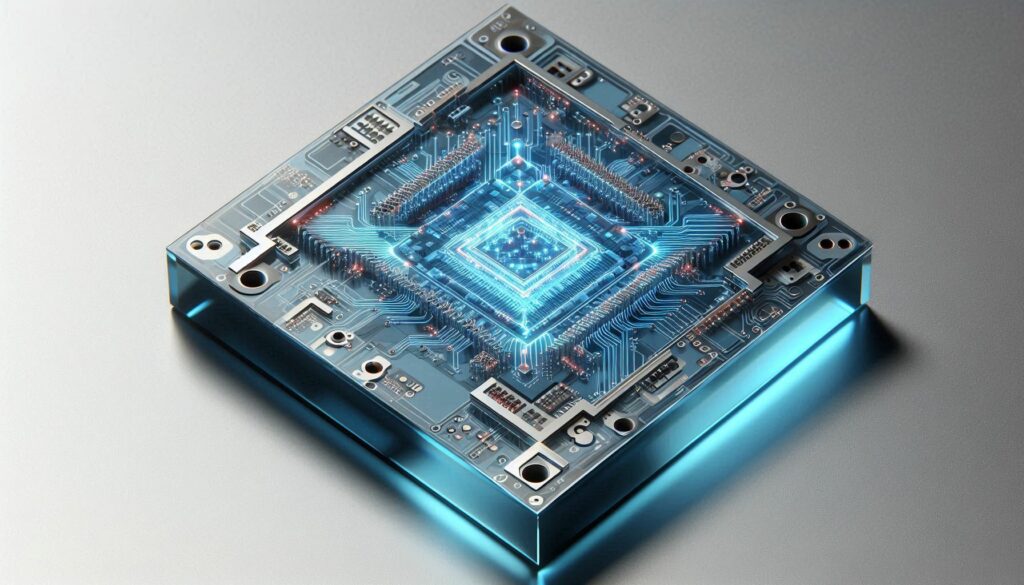
Saying goodbye to silicon

Computing at lightspeed with glass
- Dateline
- 9 July 2029
For decades we’ve used silicon semiconductors to build processors and microchips for data, signal, and information processing. Graphics too. With increasing power and speed and decreasing cost as integrated circuits approached the sub-nanoscale.
But silicon chips have their limitations; they operate electronically, using electrical signals. Transmitting data is faster using light – optical signals – and we’ve used fiber optics to send information around the world, at lightspeed, for many years.
To avoid the bottleneck of converting from optical signals to electrical and back again, Chinese researchers created all-optical photonics platforms that integrate logic and signal processing.
Not to be outdone, a pan-European effort succeeded in making photonic chips out of glass, paving the way for computers that are much faster and more powerful than anything made of silicon, and opening the door to quantum photonic machines.
Now the chip giants like Intel and Samsung are facing their own ‘Kodak moment’. Do they continue to bet the farm on advancing silicon beyond what might be its ultimate physical limits, or pivot to entirely new materials like semi-metals and glass? The stakes are enormous, and the cost of reinventing chip fabrication and design are monumental.
As quantum computing begins to become technically feasible and commercially viable, the market for efficient compute is set for a major shakeup. The enormous power demands from AI datacenters, the need for ultra-fast networks and edge computing, and photonic innovations will spawn entirely new industry leaders.
Glass can do it at the speed of light. And we’ll say goodbye to silicon.
Warning: Hazardous thinking at work
Despite appearances to the contrary, Futureworld cannot and does not predict the future. Our Mindbullets scenarios are fictitious and designed purely to explore possible futures, challenge and stimulate strategic thinking. Use these at your own risk. Any reference to actual people, entities or events is entirely allegorical. Copyright Futureworld International Limited. Reproduction or distribution permitted only with recognition of Copyright and the inclusion of this disclaimer.